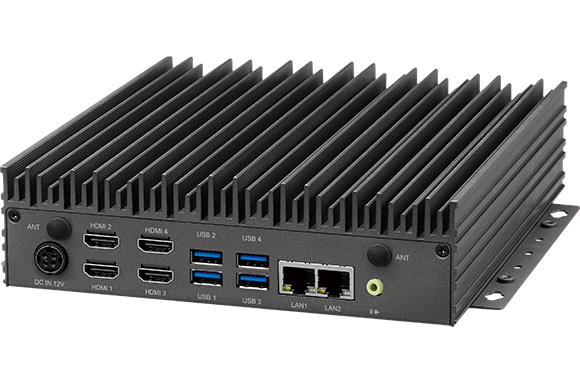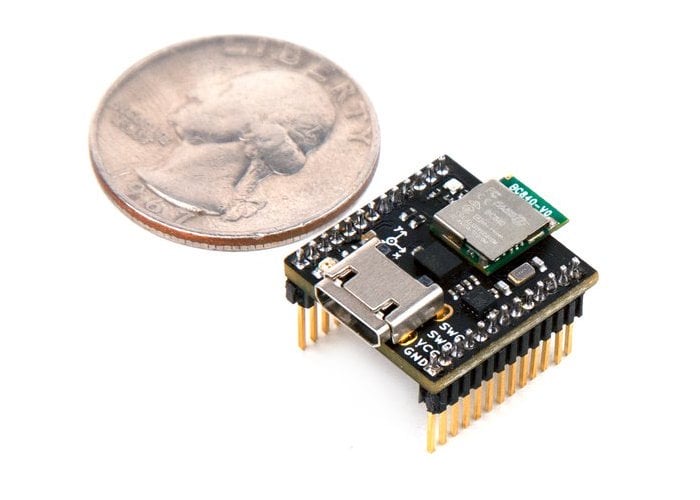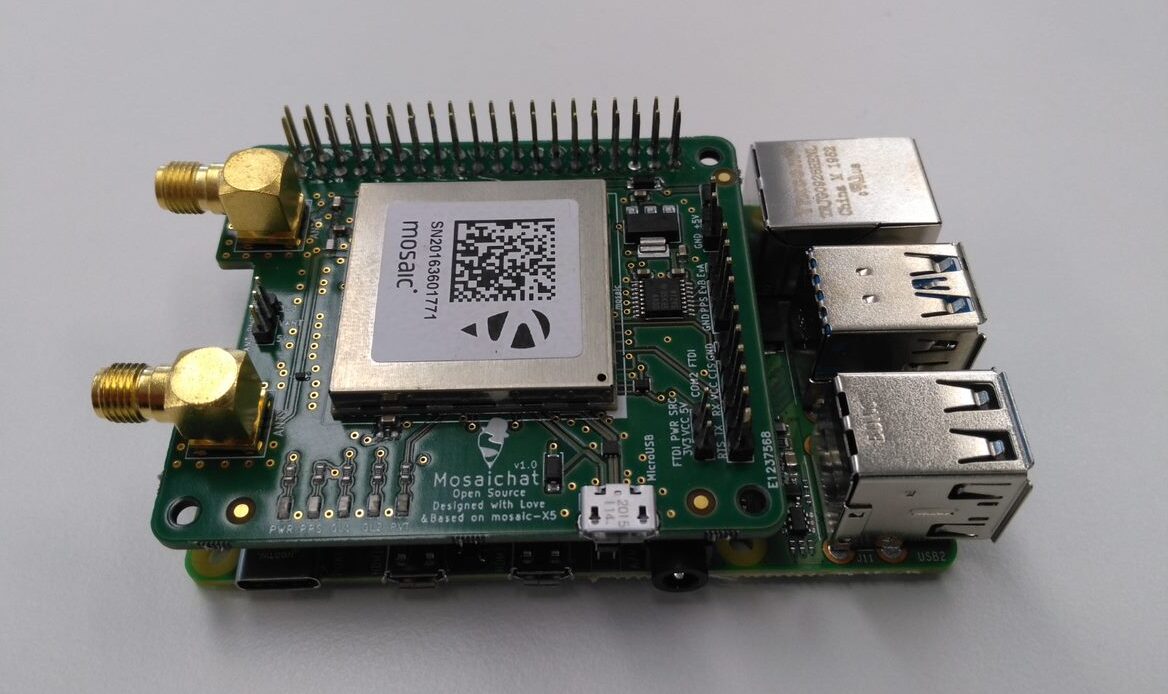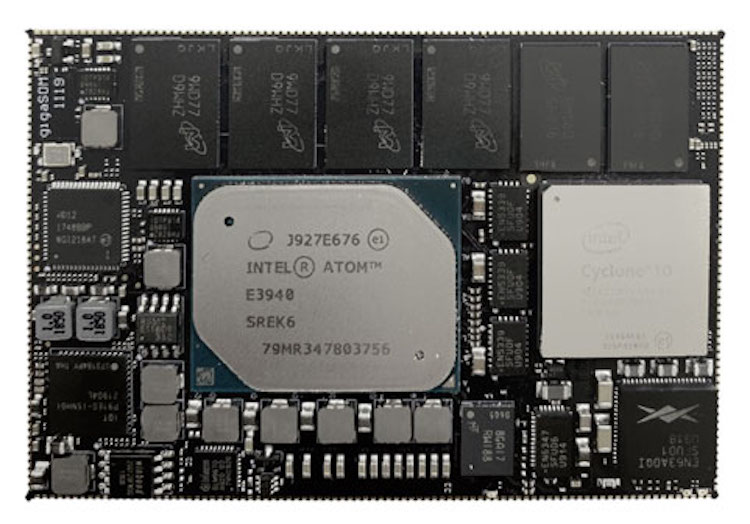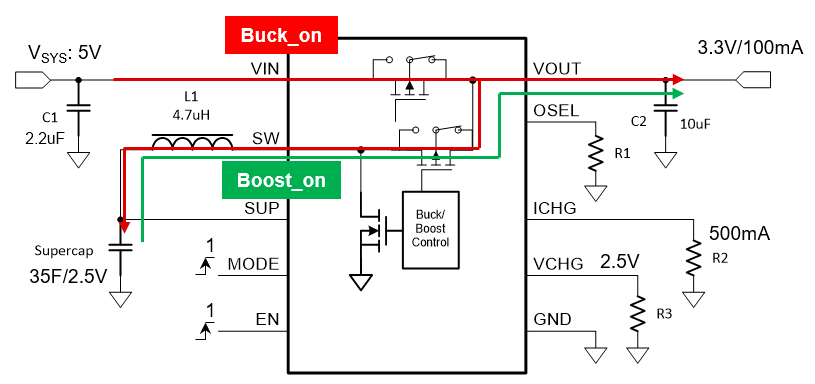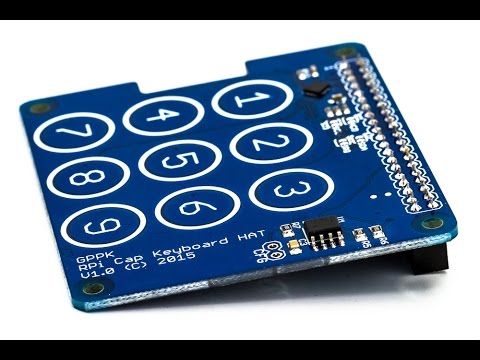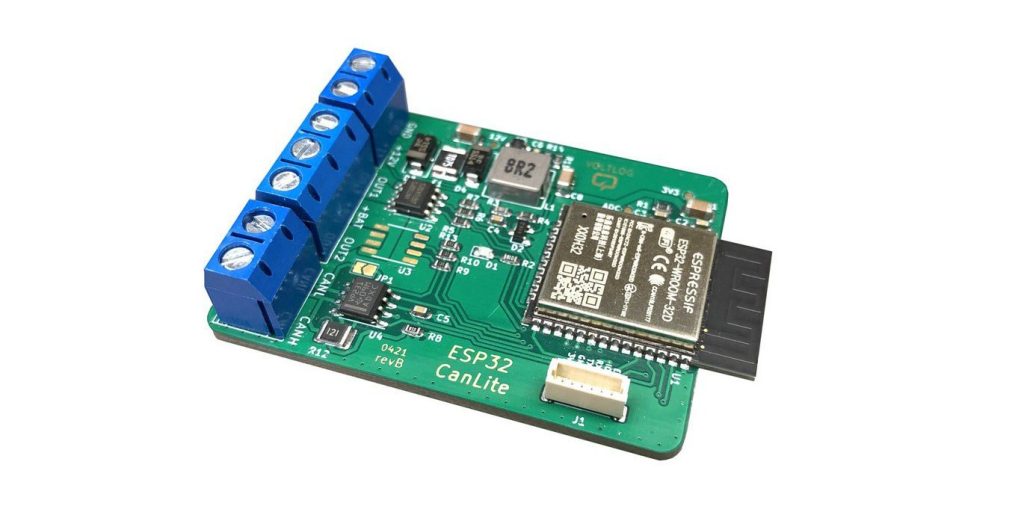
Yet another development board featuring Espressif Systems’ powerful ESP32 microcontroller. VoltLog recently released the CanLite, a wireless CAN bus hacking, and development board built around an ESP32 microcontroller.
But the CanLite was not meant to be a universal development board, because limited I/Os are available. However, it was designed as a development board tailored to meet the maker’s specific requirements. Yet, many users will find that the features selected by the maker are also suitable for their own projects. Additionally, the board is programmable using the Arduino IDE or ESP-IDF through the onboard JST-SH VoltLink pin header.
Espressif’s ESP32 microcontroller is at the core of this compact CAN Bus wireless board. It is one of the most popular microcontrollers because it is a complete standalone system. Along with this, the dual-core processor provides a lot of processing power as well as Wi-Fi and Bluetooth connectivity for remote control and over-the-air updates (OTA).
The board gets its power directly from the car’s +12V system via the built-in automotive-grade DC-DC step-down converter. On the input of the converter, there is additionally reverse polarity and over-current protection, which adds another layer of safety to the protective measures given by the dc-dc converter itself.
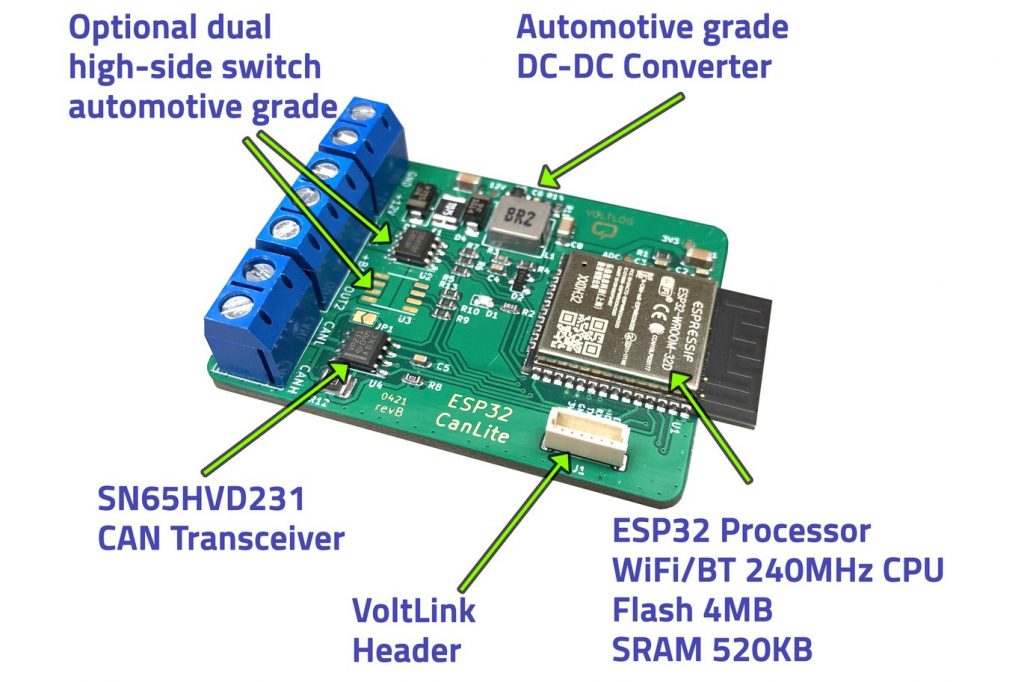
CanLite also features an optional two-channel high-side automotive-grade switch, ST’s VN750PS. It is capable of switching up to 6A per channel with integrated safety provisions. You can purchase the board with one, two, or no high side load switches assembled.
Furthermore, with the inclusion of a voltage regulator, the board can also measure VBAT voltage, allowing it to go into a deep sleep, for example, if the car battery voltage falls below a particular threshold.
Technical Specifications of CanLite ESP32 CAN Development Board
- Espressif ESP32 processor working at a frequency of 240 MHz.
- It comes with integrated 4MB of flash storage and also features 520kB of on-chip static RAM (SRAM)
- Measurement of VBAT voltage uses an onboard voltage divider, and make code decisions based on that.
- The ST VN750PS, a high-side driver in a SO-8 package, enables you to switch automotive accessories
- Texas Instrument’s SN65HVD231 is a low power, high performance CAN interface transceiver
- The onboard 120-ohm termination resistor is configurable via a solder jumper.
Since the ESP32 has the controller part but cannot drive the actual CAN signals or differential signals on a CAN bus, an external transceiver is necessary. Hence, the board employs an SN65HVD231 controller area network (CAN) transceiver, ensuring a robust and compliant interface is provided. It includes many protection features that ensure device and CAN network reliability. Also, the transceiver is compatible with ISO 11898-2 at data rates up to 1Mbps.
You can check out the GitHub repository for exploring the software support of the device. The CanLite ESP32 CAN Development Board is available on Tindie for $30.99. For information, you can visit the official product page on Tindie’s website. Technical specifications and images have also been taken from the product page.





